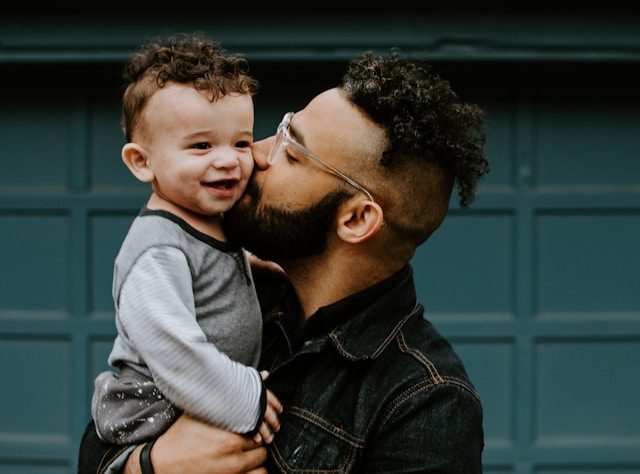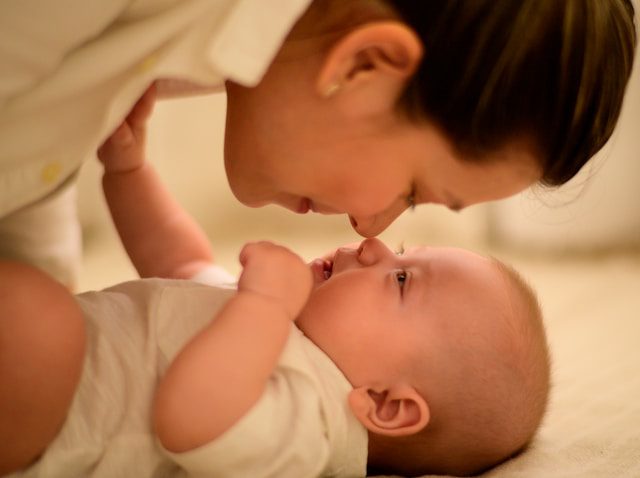In the early stages of life, babies are eager to communicate, yet they often struggle to express their needs and feelings. As parents, we strive to understand our little ones, but the lack of verbal communication can lead to frustration—for both babies and caregivers. This is where teaching a Baby Sign can be a game-changer.

No matter which sign language you chose, ASL, BSL or others, with Baby Sign, you can unlock an incredible tool for early communication, helping babies express themselves before they can speak. But the benefits go far beyond just reducing frustration—let’s explore some of the most significant advantages of teaching simple signs to babies.
1. Baby Sign leads to early communicaton
Babies typically start to speak their first words around 12 to 18 months, but their desire to communicate begins much earlier. Since motor skills develop faster than speech, babies can use their hands to make signs long before they can form words. Teaching Baby Sign gives them the ability to express basic needs—such as hunger, thirst, more, finished—early on.
This can significantly reduce crying and frustration for both the baby and the parent. Instead of guessing what’s wrong, a baby who has learned signs for common needs can clearly indicate what they want, leading to a more peaceful environment at home.
2. Strengthening the Parent-Child Bond
When a baby uses sign language, parents can engage more effectively with them, creating meaningful interactions that deepen their bond. Communicating through signs encourages more eye contact, closer observation, and more focused attention from parents. This back-and-forth interaction helps develop a stronger connection with your child while supporting emotional development.

3. Boosting Cognitive Development
Using Baby Sign as part of a baby’s early development can positively impact cognitive skills. Studies show that babies who learn sign language tend to have better problem-solving skills, as signing encourages them to think about communication in different ways. The process of learning, remembering, and using signs can also enhance memory and concentration, both critical for overall cognitive development.

4. Accelerating Spoken Language Development
Contrary to some misconceptions, teaching babies sign language doesn’t delay speech development. In fact, many studies suggest the opposite—babies who learn sign language often develop verbal language skills more quickly than their peers. Signing helps them associate words with objects and actions, which aids in language comprehension.
Because babies who sign are already familiar with the idea of communicating, they often transition to spoken words with greater ease. As they learn to speak, they gradually rely less on signs, but the foundational communication skills remain strong.
5. Fostering Inclusivity and Awareness
Teaching babies Baby Sign promotes inclusivity and awareness from an early age. It opens up a world of communication with the Deaf and hard-of-hearing community, fostering empathy and understanding. Children raised with an awareness of sign language may grow up to be more compassionate and inclusive individuals, aware of different ways to communicate with others.
6. Enhancing Fine Motor Skills
Signing involves the use of fine motor skills, such as hand movements and coordination. As babies practice different signs, they develop greater hand-eye coordination and dexterity. These motor skills are not only useful for signing but also for other activities like holding utensils, grasping objects, or later, learning to write.
7. Encouraging a Love of Learning
Introducing a second language, whether through signing or spoken words, stimulates curiosity and a love of learning. Baby Sign offers babies a new way to interact with their world, encouraging exploration and discovery. By making communication easier, babies are more likely to engage in learning opportunities and develop confidence in their abilities to express themselves.

Getting Started with Baby Sign
If you’re considering teaching your baby a Sign Language, it’s important to start with simple, everyday words like “milk,” “eat,” “more,” and “all done.” Repetition and consistency are key—use the signs every time you say the word, and make sure to model the sign with your hands while maintaining eye contact. Babies typically start signing back around 6 to 9 months, though every child is different.
There are many resources available, from books and videos to baby sign language classes, that can guide you through the process. The goal is to make signing a natural part of your daily routine, so you and your baby can enjoy the benefits of early communication.

Final Thoughts about Baby Sign
Teaching signs to babies is a rewarding and enriching experience for both parents and children. It not only facilitates early communication but also supports emotional, cognitive, and social development. With benefits ranging from reduced frustration to enhanced language skills, it’s no wonder more parents are choosing to introduce sign language as part of their baby’s growth journey.
By giving your baby the gift of sign language, you’re opening a door to understanding, bonding, and a lifelong love of learning. If you’re ready to dive in, check out this fantastic YouTube video
The Amazing Benefits of Baby Sign
Please Contact Us to let us know your experience of using Baby Sign
Credits: Video from Ingenious Baby featuring Bill White, founder of Happy Baby Signs

